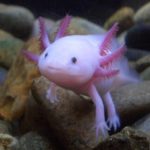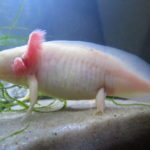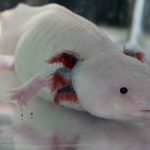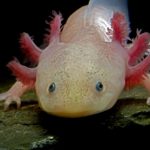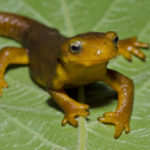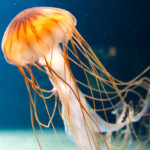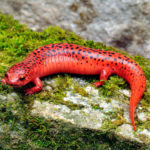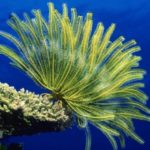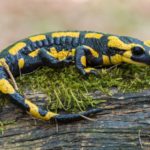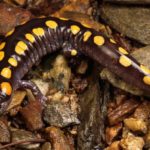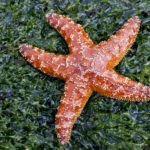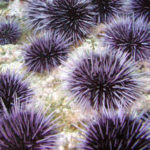Axolotls
 Axolotl is one of the strangest and most unique creatures on Earth. Because of its tiny dark eyes, the curve of a grin and the unusual headgear, these miniature salamanders are very different from most animals on our planet. But there is something that can not be seen from the side, and yet these neo-genetic larvae of the Ambystom family have incredible abilities and cope with insurmountable difficulties during their lifetime.
Axolotl is one of the strangest and most unique creatures on Earth. Because of its tiny dark eyes, the curve of a grin and the unusual headgear, these miniature salamanders are very different from most animals on our planet. But there is something that can not be seen from the side, and yet these neo-genetic larvae of the Ambystom family have incredible abilities and cope with insurmountable difficulties during their lifetime.
Many amphibians have the ability to regenerate, but all of them are far from the talent of axolotl. These delightful creatures can restore almost any part of the body, including the spinal cord, jaws and limbs! When the limb or part of the body is restored, the axolotl marks it with a scratch or leaves any other sign so that the regenerated organ can be distinguished from the rest.
If a large predator attacks a larva, a small salamander tilts one of its appendages to divert the attention of the aggressor and avoid death. Appendage will grow again and moreover very quickly. Axolotl can restore the same limb hundreds of times, and each time the new organ will be absolutely flawless.
In conditions of artificial maintenance in domestic aquariums and in laboratories of axolotls it is possible to find practically all over the world. But when it comes to free salamanders of this species, they can be found only in one place on Earth. These creatures are the endemics of the mountain lake Xochimilco (Xochimilco), located in Mexico.
Unfortunately, local authorities and industrialists neglect the unique pool very much, and a huge amount of waste is dumped into its water. Over time, polluted water has become an ideal environment for such carnivorous fish as carp and telopia, which feed on our small amphibians, as well as other inhabitants of the lake. Axolotly, in turn, prefer shellfish, small crustaceans and other living creatures that can only fit into their tiny mouths.
Axolotl faces many dangers. In addition to the fact that these larvae suffer from the industrial pollution of Lake Xochimilko, and are compelled to constantly compete with water-filled carp and telapia, they also have to deal with tourists.
The fact is that Xochimilco is home to large beautiful floating gardens, which made the lake a popular tourist attraction. This pond was even called Mexican Venice. But tourists hurled here are a big threat to the local flora and fauna, including the axolotls.
For the weekend, thousands of noisy tourists come here who drink soda and eat fast food, throwing out jars, bottles, cigarette butts and wrappers directly into the water. All this poses a serious threat to the population of wild axolotls.
Everything is so serious that recent studies have not found any wild axolotls in the lake at all. This means that these amazing and rare on the planet creatures live now only in private aquariums and scientific laboratories. It sounds creepy.

